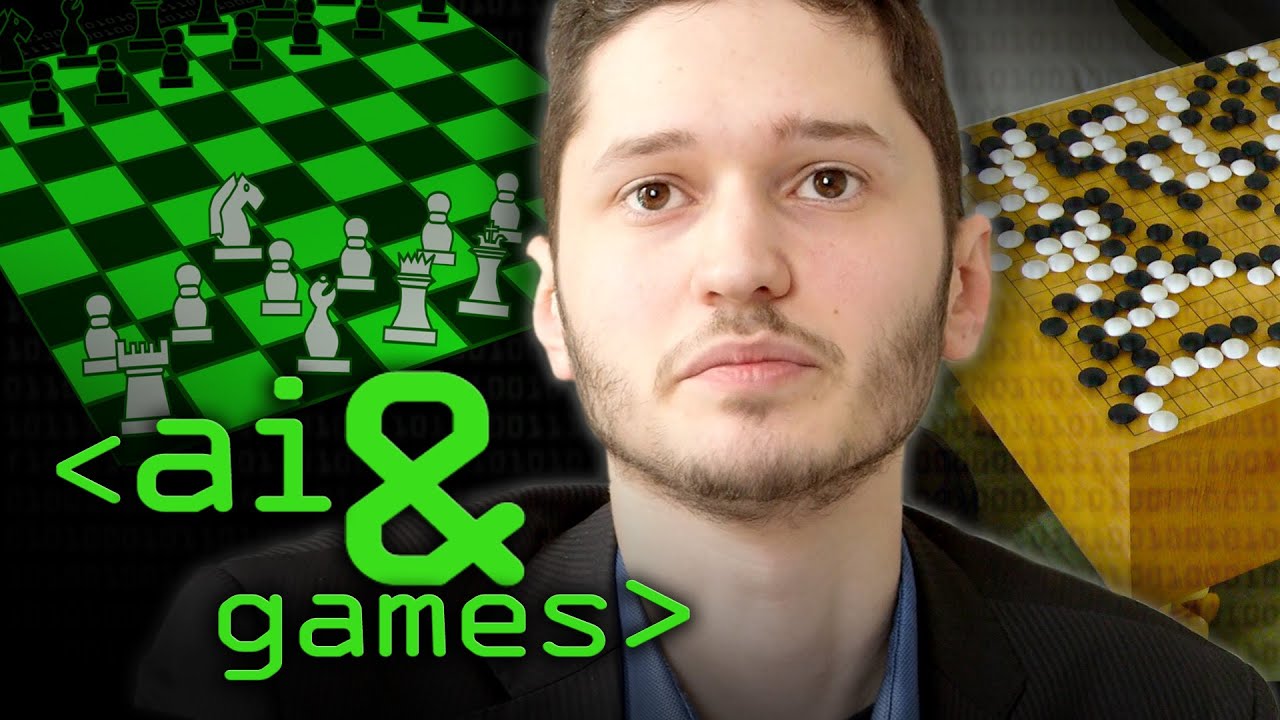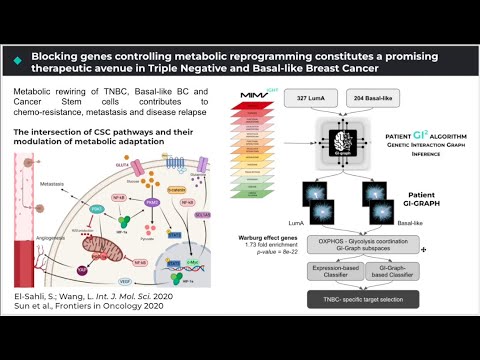Computerphile
AlphaGo is beating humans at Go – What’s the big deal? Rob Miles explains what AI has to do to play a game.
What on Earth is Recursion?: https://youtu.be/Mv9NEXX1VHc
Object Oriented Programming: https://youtu.be/KyTUN6_Z9TM
Mixed Reality Continuum: https://youtu.be/V4qxfFPgqdc
AI Playlist: AI Playlist: https://www.youtube.com/playlist?list=PLzH6n4zXuckoewGfo3a6ShFS3zPKndPd3
Many thanks to Nottingham Hackspace for providing the location and being downright awesome
Easter Egg: https://youtu.be/B8CujhUwVic
http://www.facebook.com/computerphile
https://twitter.com/computer_phile
This video was filmed and edited by Sean Riley.
Computer Science at the University of Nottingham: http://bit.ly/nottscomputer
Computerphile is a sister project to Brady Haran’s Numberphile. More at http://www.bradyharan.com
Source




Rob Miles 2016: "We need a lot more paper".
Octothorpe
Omfg he’s so cute
chess could theoretically go on forever so it would be very difficult to create a graph for
What about Videogames ? Like MOBAS.
Dude its called "tic tac toe"
ai and games i have noticed is hard because ppl teaching them you can just tell them the rules and they play ai have to take it seriously and like try and be the best
Is this video taking place in a janitor's closet?
I am able to play 20 different games of GO at once with master players and lose each game.
I'm not sure this guy knows much about chess.. You can't simply count the pieces / values to determine who is winning mid game..
It's actually easy to do the full min-max tic-tac-toe tree if you account for symmetry, 'forced' moves, and 'transpositions'(the same moves are done in a different sequence).
There are only 3 possible first moves: the center, a middle edge, or a corner.
1. x: center
2. o: middle edge
3: x can 'force a win' by going in a corner next to the 'o'.
4: o: opposite corner of last play.
5: x: in square touching both x's
6: o: blocks one run, but the other is open, so x wins.
2. o: corner
3. x: opposite corner
4. o: any middle edge lets x force the win.
4. o: any corner is a draw.
1. x: corner
2. o: middle edge
3. x: center, x forces a win with same strategy as above.
2. o: corner
3. x: any corner is winning for x.
2. o: center
3. your best shot is playing the opposite corner, then you win if o plays a corner, draw otherwise.
1. x: middle edge (most, if not all ways for x to force a win will just be a transposition of the game plays from the first two strategies), but mostly this is a lot of draws.
While this summarizes a lot, it gives you the basic idea. With symmetries, links to transpositions, and truncating forced moves, you could fit the tic tac toe min-max tree on a single page of legibly hand written boards,
I do not exactly know.
Google's AlphaGo AI beats the world's best human Go player. Google's AlphaGo AI Go player has defeated Ke Jie, Go world champion,… Just For The RECORD!
I call tic-tac-toe Xs and Os (I live in Ireland btw) but sometimes we play it with smiley faces and other things
Didnt really takl about real AI (which is not just evaluation and if statements) but great video nevertheless
And now we've seen Elon's Open AI beat pro DOTA players. I can't even wrap my mind around that.
Man, I learned this stuff so bad at college and now I see why being smart enough to understand them is important.
minmax!
i have one question, isnt 7 is just relatively bigger in my view? if the opponent is playing infront of me, my 7 would be his 3
I think, maybe the problem of scores can be easier if in chess, we can figure out a mechanism of decrease and increase higer and lower scores respectively, given certain situations in wich sacrifice of that piece is worth the price.
i don't think rob is right here as to the branches, i believe it is being done with branches. it is a machine, period. 1 and 0's
<lol>
stops counting at 42 because life's too short
</lol>
7:20 "this is a game you can play with your friends" : D
The reason Go is so hard for classic AI approaches is because we haven't been too sophisticated in our approaches so far.
Even alphago employs a very crude method to analyze the game. If it wasn't for the huge amounts of computational power we have available today, alphago would not win against top humans.
A proffessional 9 dan examines a few dozen games at most, and their attention is very focused on a number of moves, while alphago analyzes in the order of 100.000 games per move.
Im not saying alphago was not revolutionary, but it is still light years away from being "better than human" intelligence-wise.
"I've accidentally won it! " XD
I understand that "tic-tac-toe" isn't an obvious name. But why "naughts and crosses" instead of "naughts and exes", "naughts and saltires", "'O's and 'X's", etc.?
Is there a term for games where both players have the same information but neither player has complete information? Chess isn't such a game because both players know everything that can be known and know that the other plays also knows everything that can be known. Poker is also not such a game because the information that I do have isn't the same as the information you do have, and the information I don't have isn't the same as the information you don't have.
I don't understand why the first move in Naughts-n-Crosses is one of 9 possibles. To me, it's one of three: center, side, or corner. If I choose center, the 2nd player has two choices: side or corner. If my 1st move is either corner or side, the 2nd player has five choices: center; nearest cell of same type; adjacent cell of opposite type; opposite cell of same type; or furthest cell of opposite type. Etc.
What is the highest number of nodes you can reach in a chess game??
Octothorpe
I had played chess with a navy friend–then he stopped, then concedes. I had lucked into a win 🙂
stares intensely
…indeed…
So interested in ai but its sooo deep
Yes, he has to apologize. Tic Tac Toe.
And if we win, the board in this state we can call it a "One", 'cause we've "Won", right ?
Brilliant
"octothorp" …. bars
I just wrote an AI that plays this with me. Finally, I've got a friend to play computer games with.
On a side note, min-max isn't really true AI but hey, it's cool nonetheless.
And now we have AlphaStar beating humans at Starcraft.
Naughts and Crosses. Yes!
|X| |
| | |
|. |. |